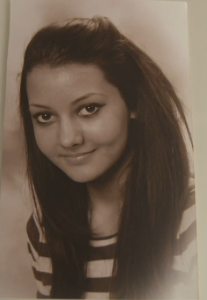Given the treatment of women by ISIS (“Dash” or the “Islamic State of Iraq and the Levan”) it’s hard to imagine women voluntarily joining that radical Islamist group. But in fact a number of young women from Western countries have done just that. The largest number are from Britain, but they have also come from other countries, including Germany. Recently, a 17 and 18 year old traveled to Iraq to Join ISIS from northern Germany. They created a big splash in the German media, particularly because the father of one of the girls committed suicide. One of the aspects of the story that struck me was the gradual change in behavior and appearance of the girls, as they came under the influence of ISIS online propaganda. There was an interview with the mother of one of the girls who remarked on the change in appearance, with her daughter beginning to use a headscarf, then gradually moving to a body-covering outfit. She said in the news story that she had spotted her daughter in town at a bus stop and only knew it was her from the purse she was carrying. She went to her and forced her to take off the robe she was wearing.
In this instance, the way the girls were dressing was a clear indication of their turn to a different way of life, namely radical Islam. A very different case is that highlighted in a new movie called 3½ Minutes, Ten Bullets, which is about the shooting of four African-American teenagers over the volume of their rap music, killing 17-year-old Jordan Davis, by Michael Dunn, a 45-year-old Caucasian man. One of the interviews that was conducted for the documentary was with Jordan Davis’ mom. She described him, as did other witnesses, as a well-behaved young man. In an NPR story about the film, she was asked about how he dressed, which was often in hip-hop style with this cap cocked to the side. She said that she told him repeatedly to pull up his pants, but he wouldn’t listen. She warned him that if he kept dressing that way, she would pull his pants down in public, which in fact she did at a mall, much to his embarrassment.
In this case, in contrast to the German girls, how Jordan dressed was not indicative of a major change in his worldview. It was just a matter of fashion, not an indicator that he had become a gang member or anything else nefarious. That, however, may not be how some whites view someone dressed that way, which, as in the tragic case of Trayvon Martin, may in this case as well have contributed to his death. The reality is that how others are dressed often provides a powerful first impression, often based on stereotypes of questionable validity.




